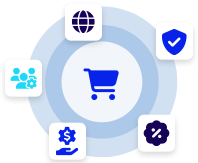A software ecosystem refers to a network of interconnected software applications, platforms, and services that work together to provide comprehensive solutions for users. These components are developed and offered by various companies, organizations, or individual developers, but they are designed to complement each other’s functionality, creating a more robust and seamless experience for users. The ecosystem is similar to a biological ecosystem, where different species interact and depend on each other for survival and growth.
In a software ecosystem, the different components are typically designed with APIs (Application Programming Interfaces) that allow them to communicate and share data, enabling integration and interoperability. This interconnectedness fosters collaboration and innovation among developers and service providers, leading to the creation of more comprehensive and user-centric solutions.
Examples of software ecosystems include:
- Mobile App Ecosystems: Mobile app ecosystems consist of various applications developed for mobile devices, such as smartphones and tablets. Operating systems like Android and iOS serve as the foundation for these ecosystems, with app stores acting as centralized distribution platforms. Users can access a wide range of apps that interact with each other and with the core functionalities of the device, providing a seamless user experience.
- Cloud Computing Ecosystems: Cloud computing ecosystems involve a variety of cloud-based services, including Infrastructure as a Service (IaaS), Platform as a Service (PaaS), and Software as a Service (SaaS). These services are interconnected, allowing users to leverage scalable infrastructure, development platforms, and ready-to-use software applications for their computing needs.
- Social Media Ecosystems: Social media platforms form their own ecosystems, where users interact with each other, content creators, and advertisers. These ecosystems provide various services, such as messaging, content sharing, advertising, and analytics, all working together to engage users and drive user-generated content.
- IoT (Internet of Things) Ecosystems: IoT ecosystems consist of interconnected devices, sensors, and software applications that collect and exchange data to enable smart and automated systems. These ecosystems often involve cloud-based platforms for data processing and analytics.
- Web Development Ecosystems: Web development ecosystems include various tools, frameworks, and libraries used by developers to create websites and web applications. These ecosystems often feature front-end libraries like React or Angular, back-end frameworks like Node.js or Django, and database systems like MySQL or MongoDB.
- Enterprise Software Ecosystems: In the business world, enterprise software ecosystems involve a collection of software solutions that cater to different business functions, such as accounting, customer relationship management (CRM), human resources, project management, and more. These solutions can integrate with each other to streamline business operations.













